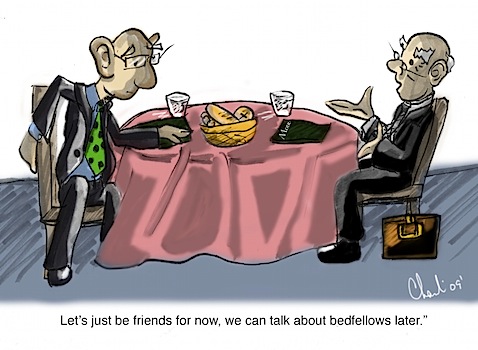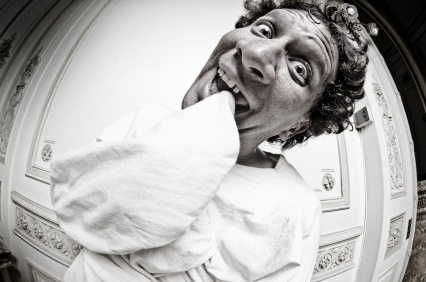
Recently I received an email from 5th grade art teacher, Mr. Sergi. He said he does a unit on cartoons and his students are curious about tools of the trade, career info, publishing norms, etc…
I’ve actually meant to do a post like this for a while, so for kids out there interested in cartooning as a career, here’s the quick and dirty on my process and experience:
Materials
Every artist is different and I recommend that you play with as many pencils, pens, papers, or whatever as much as you can. It probably took me a good two years to find the tools I use now, but putting in that time is part of finding your style. I know cartoonists using pencil, crayon, ink & pen, and ball point on papers ranging from watercolor to copier quality.
But, since you asked, I use Faber-Castell Pitt brush pens and Prismacolor cool gray markers on Borden & Riley bleedproof marker paper. I still do all of the art the old fashioned way, but of course I use my computer for scanning, cleanup, and playing Hordes of Orcs.
Writing
You of course need to be a decent artist to be a cartoonist, but even more important is the writing. Good writing can carry bad art, but not the other way around. Study comedy and figure out how it works. And once you’ve done that, edit yourself well. Brevity is wit.
Dimensions
“How big should I draw my cartoons?” is a question every beginning cartoonist asks. If you’re looking to be a comic strip cartoonist, you’ll want to look at the dimensions of current strips and size that up as needed. For gag cartooning (what I do), or web cartooning, there’s really no preset dimensions to worry about. Just draw as much or as little as you need to get the joke across.
Art
Everyone’s style is going to be different, and I don’t think you necessarily need to go to art school to be a cartoonist, but you do need to draw well enough so your cartoon reads quickly and effectively. The best advice I can give is to draw constantly; it doesn’t get any simpler than that. The more you draw, the more happy accidents occur and your individual style emerges. Draw, draw, draw, eat a sandwich, then keep drawing.
Markets
Newspapers are having a rough time of it, and magazines aren’t doing a lot better. Where I used to make most of my living selling to traditional print, most of my income now comes from selling my cartoons online. Where will cartoonists earn their livings in the near future? It’s hard to say, but don’t believe anyone who tells you you can’t earn a living at it. Do good work, do a lot of it, and keep an open mind.
So that’s cartooning in a nutshell for me. I hope you and your teacher get something you can use out of this, and I wish you all kinds of luck cartooning. I can’t think of a job that’s better than drawing funny pictures all day.

 Writing is probably at least 75% of a cartoon. Good art attracts readers initially, but good writing is why readers come back.
Writing is probably at least 75% of a cartoon. Good art attracts readers initially, but good writing is why readers come back.

 Selling cartoons is hard enough; give yourself a leg up on the competition by playing better odds.
Selling cartoons is hard enough; give yourself a leg up on the competition by playing better odds.